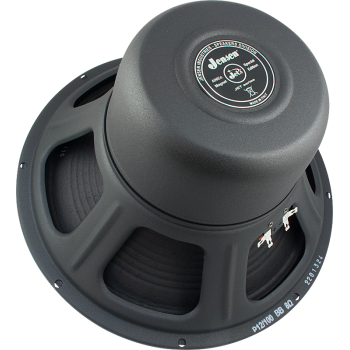Setting up a Guitar Speaker
So you have just purchased your guitar speaker. Have questions about setting up a guitar speaker, guitar amplifiers, Amps, Watts, Ohms? Good! You will be less likely to damage your guitar speakers or compromise their tone if you know where to keep them, how to run them, and with what.
MAINTENANCE – Consider keeping your speaker in a controlled temperature environment – ie. not a humid garage with wild temperature fluctuations. Guitar speaker cones are basically made from paper.
How not to blow your Guitar speaker
Here is a simple formula that we give as a rule of thumb:
Sum of your speaker Wattage > amp wattage
- Add up the wattage for all the speakers that you plan to connect to your amp.
- Make sure that your amp is rated for:
- about half that many amps – This is playing it safe. You may be getting any optional desired effects/breakup/distortion electronically via effects processors and such: So you may have less of a need to push so much power into the guitar speaker itself that the speaker begins to distort/break up.
- almost right up to that same number of amps – you are pushing it… and risking blowing speakers. But if you want to hear everything sound the guitar speaker is capable of, you will have to test its limits. This will be at your own expense, since our Audio Engineer inspects returns – don’t be tempted! He can tell.
Matching Amp and Speaker Wattage
Most players find their happy medium between these two points, but taste is a factor. Some players want an ultra clean sound with no break up in the speaker, therefore, they will want more wattage in the speaker than the amp. Others want the amp to have more watts because they know that you cannot digitally reproduce that analogue sound of a old school guitar speaker being pushed hard.
Yes, you could over-power them like Jimi Hendrix did, and we will gladly sell you more. He would blow speakers, but get great distortion in the speakers in the process. If you do that, we won’t just give you more like Celestion did for Jimi! But we will be happy to sell them to you.
Matching Ohms: Speakers with Amps
Most guitar amplifiers, or Heads, either have 4, 8, or 16 ohm outputs for you to connect your guitar speakers to. Here is how you connect a pair of guitar speakers to each kind of output:
- 4 Ohm – 8 Ohm pair in Parallel.
- 8 Ohm – 16 Ohm pair in Parallel, or 4 Ohm pair in series.
- 16 Ohm – 8 Ohm pair in Series.
eKnowledge Base
Avoid compromising the tone or damaging your guitar speaker (or your amplifier) by reading our pertinent articles and resources below on following topics and more:
- How to break-in a guitar speaker – by Celestion’s Dr. Decibel
- How many guitar speakers can I connect to a guitar amplifier? – by Guitar Speaker Store
- Impedance (Ohms) – What are the Ohms of a Guitar Speaker? – by Guitar Speaker Store
Resources
Links
Glossary
At left, in the navigation, you will hopefully see a glossary with at least 7 linked terms listed under it. These are terms are described in a way that is pertinent to the guitar speaker business. If you are viewing this page in Google Chrome, you can simply hover your mouse over the word, to see our definition: or at least gain our perspective from the world of guitar speakers. These vocabulary words are always there for you to hover over as you are learning them – while using our website uninterrupted.
Our eBay Store
We are adding speakers like this and more that you can order online directly from our warehouse – without contacting us. You can buy some more guitar speakers online at out our eBay store. We also have our products listed here below on this website, which is searchable.

